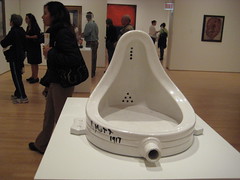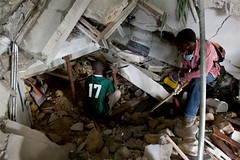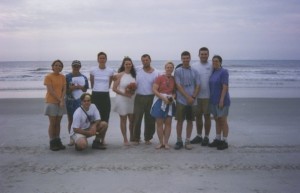I’m so appreciative of the discussion that developed from my previous post. I could see that people commenting were really digging deep, so I decided to address some of what was said in this follow-up post.
Here are some of the comments about the definition of quality:
Michael Bolton shared his perspective on Jerry Weinberg’s definition: “To be clear, Jerry’s insight is that quality is not an attribute of something, but a relationship between the person and the thing. This is expressed in his famous definition, ‘quality is value to some person(s).’ ”
Rikard Edgren’s definition: “Quality is more like “good art” than “art”, but anyway: I can tell what “quality to me” is when I see it. I can tell what “quality to others” is when I see it, if I know a lot about the intended usage and users.” Rikard also wrote a post where he clarifies his position a bit.
Andrew Prentice wrote about what he feels is missing from Weinberg’s definition: “I like Weinberg’s definition of quality, but I’m not convinced that it is sufficient for a general definition of quality. Off the top of my head I can think of two concepts that I suspect are important to quality that it doesn’t seem to address: perfection and fulfillment of purpose.”
The definition of quality that I learned is from Stephen Kan’s book, Metrics and Models of Software Quality Engineering. Interesting is that Kan shows a hearty and active disdain for what he says is the “popular” definition of quality. “A popular view of quality,” he writes, “is that it is an intangible trait—it can be discussed, felt, and judged, but cannot be weighed or measured. To many people, quality is similar to what a federal judge once commented about obscenity: ‘I know it when I see it.’ This is sounding familiar, no? Here is where the pretension begins to flow: “This view is in vivid contrast to the professional view held in the discipline of quality engineering that quality can, and should, be operationally defined, measured, monitored, managed, and improved.’ ” Easy, tiger. We’ll look at this again later.
Jean-Leon Gerome’s painting of Pygmalion and Galatea brings this discussion to mind. This is a link to themyth of Pygmalion and Galatea.
I’ve seen this painting in person, at the Met. Interesting to note is that the artist was painting himself as Pygmalion in this painting. (and I like listening to “Fantasy” by the Xx while I look at this.)
The relationship in this painting is not limited to the one between Pygmalion and Galatea, the viewer is drawn into the relationship as well and the artist, himself is also participating. In this painting, Pygmalion has been completely drawn in by his own creation. The artist was so drawn in by the story that he painted himself into it. I was and am still so drawn in by the painting that it is simply painful for me to tear my eyes away from it. It slays me. When I see it, I feel the painting. I guess you could say that emotion is an attribute of this painting, but in this case, I think it’s more. In this case, the emotion is the painting. Why else does the painting exist? Would this painting work at all if the chemistry were missing? I don’t think it would. What Gerome has accomplished here is the wielding of every technique at his disposal to produce a painting with emotion as raw, basic and tantalizing as the finest sashimi.
But there is more to this relationship than just the fact that Gerome has painted himself as Pygmalion. Let’s examine the relationships that exist in this painting and what they tell us. Starting with just the painting, itself, we have the man and the woman locked in their embrace. They are surrounded with many objects. (I encourage all readers to click through to the Met’s web site. Looking at their web-site, if you double click on the painting, you can move around and zoom in and out to get a closer, more focused look.) What do you notice about all of the objects in the room? I’ve no doubt that some of you are wondering if these objects take away from the focus in the painting. If that were the case, if the painting consisted of only the man and the woman, how would we know that the man was an artist? So why do we need these particular objects? The painting could be restricted to just the hammer and chisel so what’s with all the stuff? This is where our relationship with the painting deepens should we choose to follow the breadcrumbs…
An overview of Gerome’s life, clarifies his choices. As a young artist, he spent a year in Rome which he felt was one of the happiest years of his life. At the time that Pygmalion and Galatea was painted, Gerome was grieving over the deaths of several relatives and friends. By surrounding himself with artifacts from his youth, the artist is traveling back in time to a younger, more “Roman”-tic time in his life. However depressed he may have been when he painted this, Gerome was also experiencing an artistic breakthrough in his sculpting career. Notice the breakthrough in the painting? Now that you know a bit more history, how do you feel about the painting? Does it change your perspective? This has made the painting very introspective for me. The emotion that flows from this depiction of romantic love is one of vitality and power. Perhaps Gerome is evoking these feelings as a way of tapping into his own creative powers. I remember thinking to myself when I first saw this painting at the Met, before I knew anything at all about it, “She is rescuing him.”
To describe quality as a relationship gives it a larger meaning and captures something neglected and dismissed by the literature of the “software crisis” era e.g. books such as Stephen Kan’s. Is quality as a relationship mutally exclusive to quality being an attribute of software? I don’t agree with describing quality as just an attribute. To say that quality is an attribute de-emphasizes the holistic approach to quality I try to take and for which I’m assuming Michael, Jerry Weinberg (going by his definition here only), agile, context, et. al are striving. (Full disclosure: I haven’t read any of Jerry Weinberg’s books. That does NOT mean they are not on my list. I just got out of school and the only thing I’m reading lately is visa paperwork so give me a break here.)
The software we test has its creators and has an audience of users as well. Just as Gerome had his own relationship with this painting, developers know what they want to see which leads to the building of their own relationship with the software they make. How does this affect the relationship between the software and its audience
How does value fit into this? I value the painting because of how it makes me feel when I look at it. After the examination I did, I now understand why I value the painting. As someone who is constantly seeking artistic inspiration, I am happy to go where Gerome and his muse take me. What does this say for value in software? Does the relationship between an audience of users and software create value for the audience members whether they are paying guests or not? The more I dig into this definition, the more I like it because it allows for gatecrashers, those who we did not think would be using our software, but who may find it so invaluable, they become our software’s greatest fans.
I’m going to marinate on this while I think about the 2nd part of Andrew’s comment, namely, that Mr. Weinberg’s definition of quality does not address perfection and fulfillment of purpose. After all, Kan’s two definitions of quality of “fitness for use” and “conformance to requirements” are fairly widely accepted in software.
What are you thinking? Is there something missing from Jerry Weinberg’s definition? How does measurement fit into what I’ve been writing about if it fits at all?
I leave you to think about this and the painting above. If you haven’t already, take a few minutes to click through and take a good, honest, langorous look. Put down the twitter, the kid, the spreadsheet, the reality tv show. Take some deep breaths and give yourself a few moments alone with Pygmalion and Galatea.
to be continued…
![Reblog this post [with Zemanta]](http://img.zemanta.com/reblog_e.png?x-id=41f1664d-b55f-43c9-9229-d57fae8e64f0)







![Reblog this post [with Zemanta]](http://img.zemanta.com/reblog_e.png?x-id=1ea680e6-8d0c-4858-8bba-6fc23e49fd3c)

![Reblog this post [with Zemanta]](http://img.zemanta.com/reblog_e.png?x-id=49c871fd-49c8-4479-9f0e-99ad571c26bf)

![Reblog this post [with Zemanta]](http://img.zemanta.com/reblog_e.png?x-id=13124f35-5909-443c-9df0-4093449412f1)

![Reblog this post [with Zemanta]](http://img.zemanta.com/reblog_e.png?x-id=ea549488-64ee-4cd3-bc1d-41c3d68dd0c2)

![Reblog this post [with Zemanta]](http://img.zemanta.com/reblog_e.png?x-id=af51e4a4-9f86-4ba5-bd49-5a1099637787)



![Reblog this post [with Zemanta]](http://img.zemanta.com/reblog_e.png?x-id=169ab533-76f5-4c11-a4b3-6e5f360fe029)